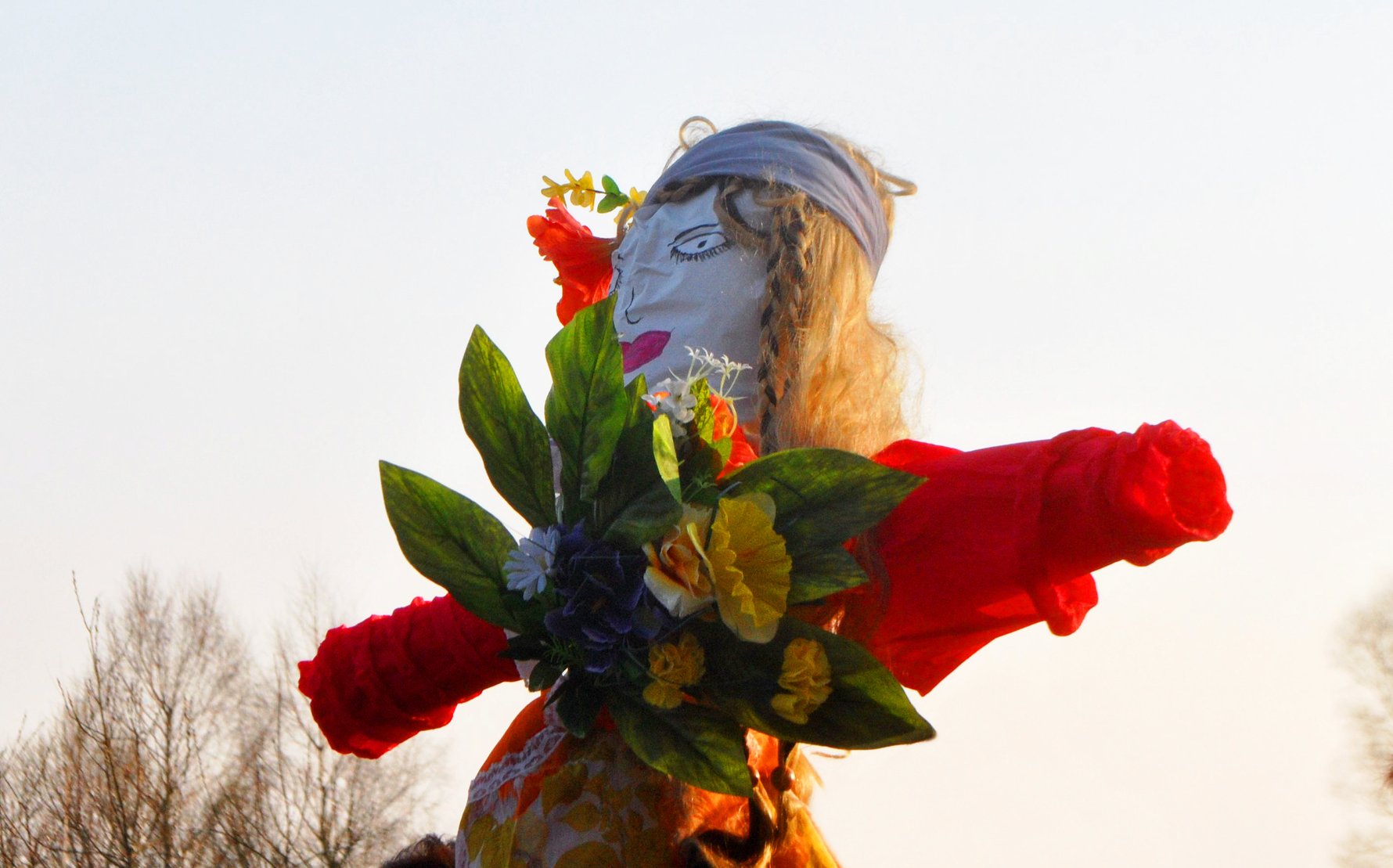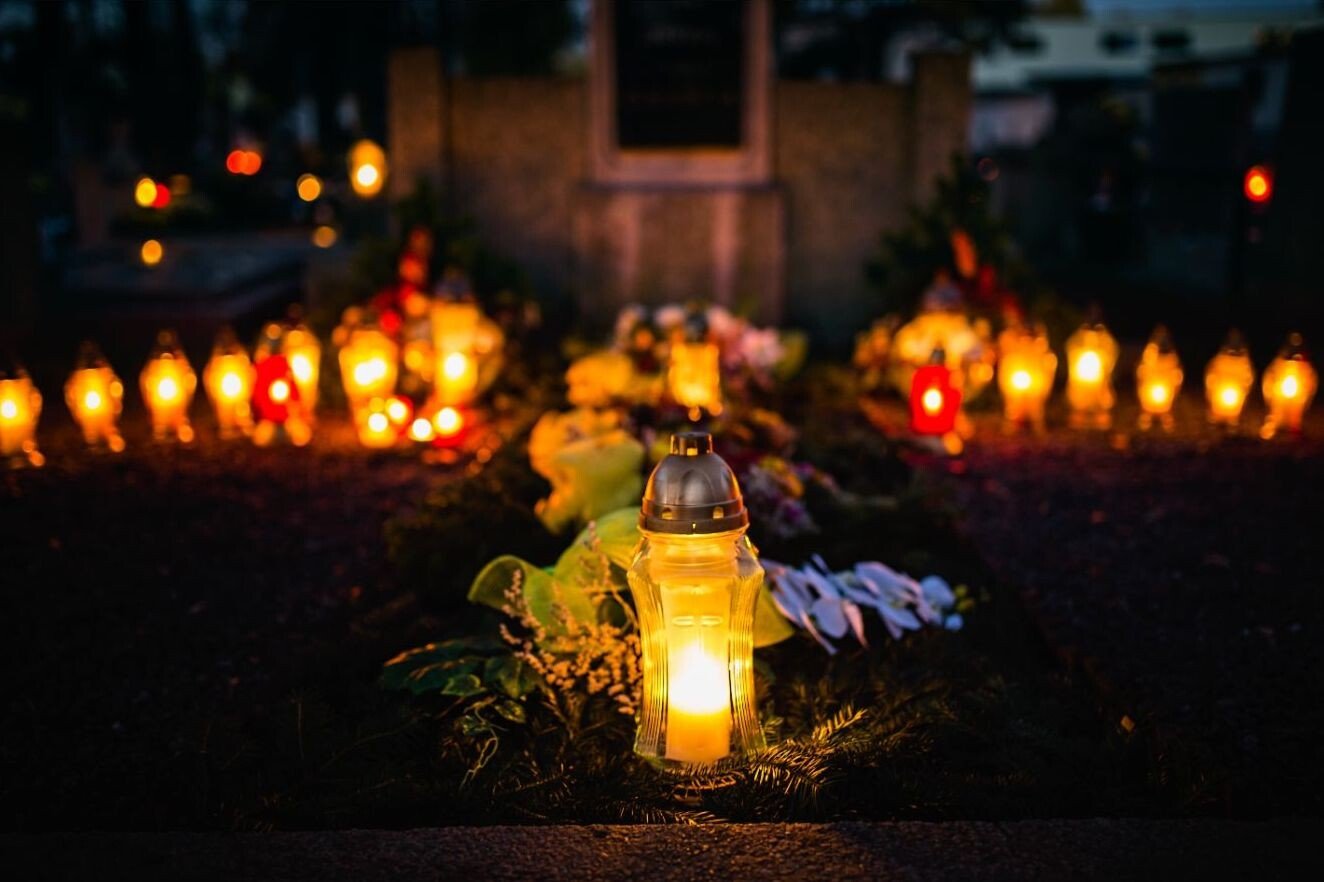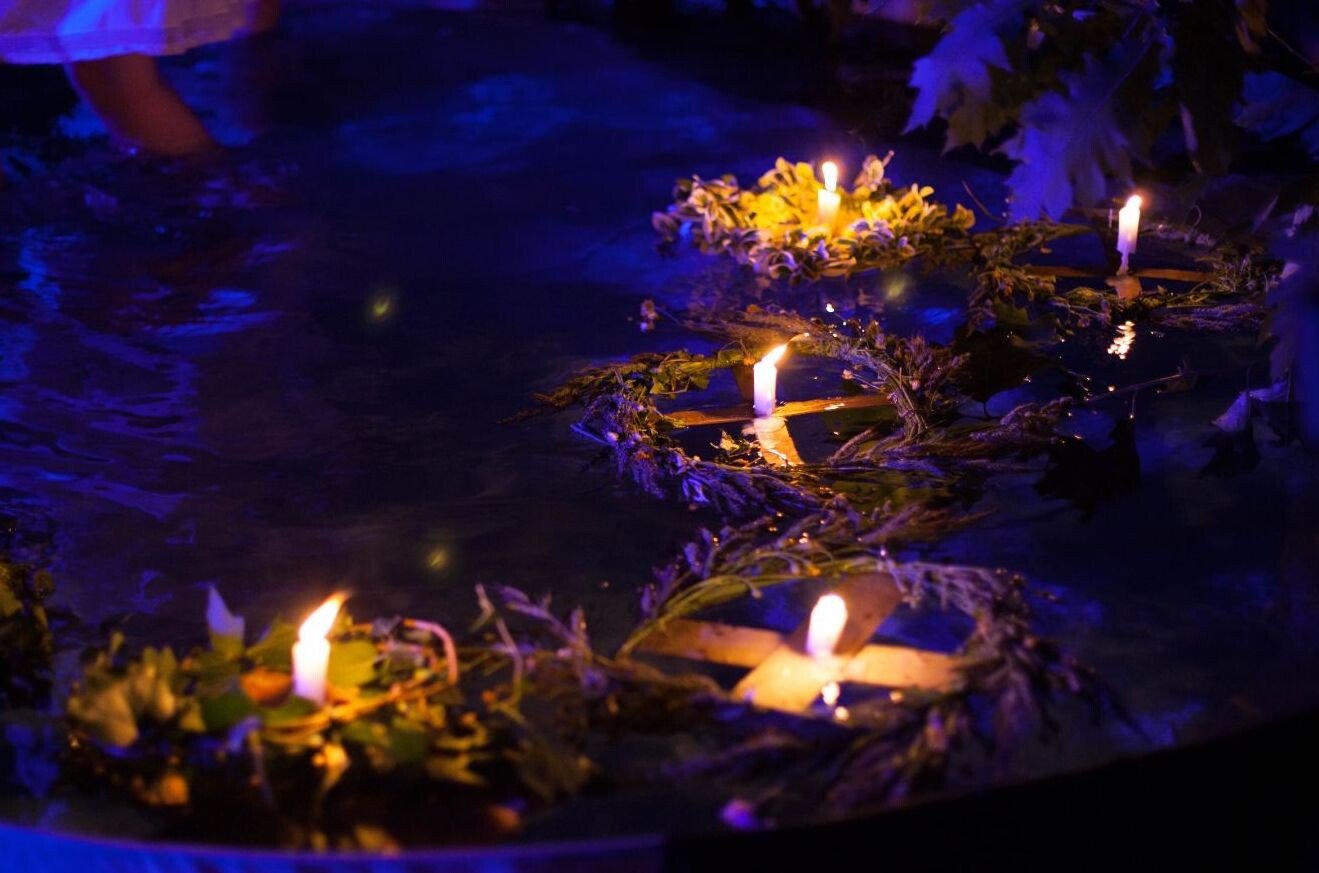Stick around a few months until June and take a trip to the Praga side of the Vistula River to see another interesting sight: groups of young people weaving plants and flowers together in a wreath, affixing them with candles and sending them down the river.
These are just two of the Slavic traditions that have survived the millennia since Christianity came to Poland. In that time, Poland has become a very Catholic country, but some of those old Slavic traditions and the Pagan religions they followed are still present in little ways.
In fact, the longer you spend in Warsaw, the more you're likely to see little hints of that ancient belief system. But where does it come from and what happened to Paganism in Poland?

Western Slavic Beliefs
Before Christianity came to this area of Europe, the Western Slavic tribes (who inhabited what are now Poland, Czechia and Slovakia) believed in a variety of pagan gods representing different aspects of nature and life-cycles. There is certainly some crossover regarding gods with the two other main Slavic groups: Eastern Slavs (modern day Ukraine, Belarus and Russia) and South Slavs (the modern day Balkan countries like Serbia, Croatia, Macedonia etc).But we are in Poland after all, so let’s focus on the Western Slavs for now. Within the Western Slavic subgroup is a tribe called the Lechites, who were the primary people living in modern-day Poland.
The main deity that the Lechitic tribes worshipped was Svetovid, a variation on the Slavic god Perun who represented anything related to bad-weather, as well as war, fertility and oak trees! Other known deities include Mokosz or Mokosh, the 'Mother Goddess' who took the form of wet earth, and Marzanna, a female deity associated with winter and rebirth. There was also Niya, a genderless god whose function is associated with death and the transfer of souls to the afterlife. In addition to a variety of gods, Slavs believed in a whole host of spirits that lived among them, in the water, in the trees, in their homes, and to which they worshipped and often made offerings for things like a good crop yield.

The Christianisation of Poland in 966 CE
This all changed in the year 966CE when Mieszko I, who had united a number of pagan Slavic tribes with the hope of solidifying a sovereign state, married a Czech princess. As marriages went back then, the purpose of this union was to strengthen political ties and, in this case, Mieszko was seeking support from Dobrawa's father, Boleslav I the Cruel, the leader of Bohemia (now a region of Czech Republic).In order to seal the deal, Mieszko was expected to convert to Catholicism, along with his followers in what’s known as the Baptism of Poland. Mieszko's conversion was, no doubt, convenient in winning the favour of other Catholic states to the west. At the very least, it’s seen as the beginnings of what would be a decades-long process of converting the region to Christianity.
Mieszko’s conversion set off a ripple effect of Christianity; churches were built throughout the country in the 10th and 11th centuries and his son, Bolesław the Brave – a huge proponent of Christianity - continued to expand the reach of the religion. He even sent the missionary Adalbert of Prague north to the frontiers of the Baltic coast in an attempt to convert the Old Prussians. The Old Prussians responded by cutting off Adalbert's head, which should tell us a lot about how resistant pagans were to Christianity at the time.
Far from embracing Christianity, the Western Slavs were extremely resistant to it. This led to an uprising in the 1030s, known as the Pagan Reaction, which really refers to a series of rebellions, largely spawned by Slavic frustrations with the spread of Christianity, but also involves some frustrations with class divide (peasants rose up against landowners as well during the Pagan Reaction). During this time, many churches and monasteries in the Kingdom were destroyed and their resident priests and monks were killed. Though the historical records on this period are spotty at best, it’s generally understood that this was enormously destabilizing and led to the king at the time, Mieszko II fleeing the country. Other records claim the uprising happened after his death – like we said, spotty records at best.
Nevertheless, the Christianization continued, largely through force, including a series of crusades against northern Slavs. Christians enacted military occupation and forced baptisms in the 12th century, and by the 13th century, much of paganism had been wiped out.
Pagan Traces in Poland Today
While much of old Slavic culture was eradicated by the 14th and 15th centuries, many pagan traditions have managed to stick around, despite Christianisation. There are, of course, actual religious groups in Poland that still celebrate and follow Western Slavic religion. But, in recent years, there’s been a resurgence of younger people celebrating some pagan rituals, not necessarily out of belief, but rather out of honoring past traditions (and just because many of these rituals are, simply put, very cool!)The Drowning of Marzanna - There is no getting around the pagan roots of this tradition. In ancient Slavic culture, Marzanna was a goddess who represented the sort of transition period between winter and spring. She was the goddess of vegetation and growth, but also of death and cold and winter. Thus, in ancient Slavic culture, Marzanna’s death was essential to end winter and bring about spring and the growing season. Pre-Christian traditions included creating an effigy of Marzanna and lighting it on fire at the beginning of spring. Without this ritual, you risked winter continuing on for months.
Now, the tradition is still celebrated in a similar way, but it’s not as serious as it once was (bringing in the growing season isn’t quite as much of a desperate need when you have a Biedronka right down the street). Still, some communities will create effigies out of straw or other cheap materials, dress them up and drown them in the river on the first day of spring – purely harkening back to the rituals of old.
Noc Kupały - Also known as Kupala night, this tradition is rooted in Eastern Slavic religion, but was popular through Poland and Western Slavic tribes as well. It marks the summer solstice in June or July and in Slavic tribes, the holiday included a lot of different traditions, mostly held around water. In fact, the name “kupala” derives from the Slavic word “to bathe” and thus, older traditions would include mass bathing in the river. During pre-Christianity, Slavs would also spend the day gathering flowers, singing, dancing and having bonfires. Overall, the holiday celebrates joy, fertility and life.
Today, Noc Kupały is still celebrated by many, either through a popular event called Wianki which sees outdoor concerts and bands come to Krakow, or through the more traditional, smaller gatherings. Head down to the Vistula River on Kupala night and you’re likely to see a lot of young people making wreaths out of flowers, affixing them with tea candles and sending them down the river at dusk.

Dziady - Coming from the Slavic word for “ancestors” or “forefathers” Dziady is, as you might guess, a tradition celebrated in honor of Slavic ancestors. As with many other religions and subcultures around the world, this Slavic tradition was held around Oct. 30 to Nov. 1, and believed to be a time when the dead would return to the world of the living. In pre-Christian customs, Slavs would attempt to communicate with the dead to win favor (and thus, have better luck in fertility, harvest etc). They would do this by “feeding” the dead - i.e. preparing large feasts and dropping food on the ground, table or grave for the souls. They would also light candles to light a path for the souls of their ancestors toward their homes.
Today, the holiday that’s celebrated is strictly Christian (though the origins still derive from Dziady): All Saints’ Day in which Poles will go to the graves of their ancestors and clean them of leaves, light candles and have a somber moment of prayer. Essentially, the tradition, both then and now, is borne out of a desire to communicate with the dead loved relatives.
These traditions are just the tip of the iceberg in terms of Slavic rituals and behaviors that still exist today, but they do shine a light on how many ancient traditions have been integrated into modern society. In Poland, even though Paganism and Slavic culture is over 1,000 years old, it’s a long way from being forgotten.



Comments